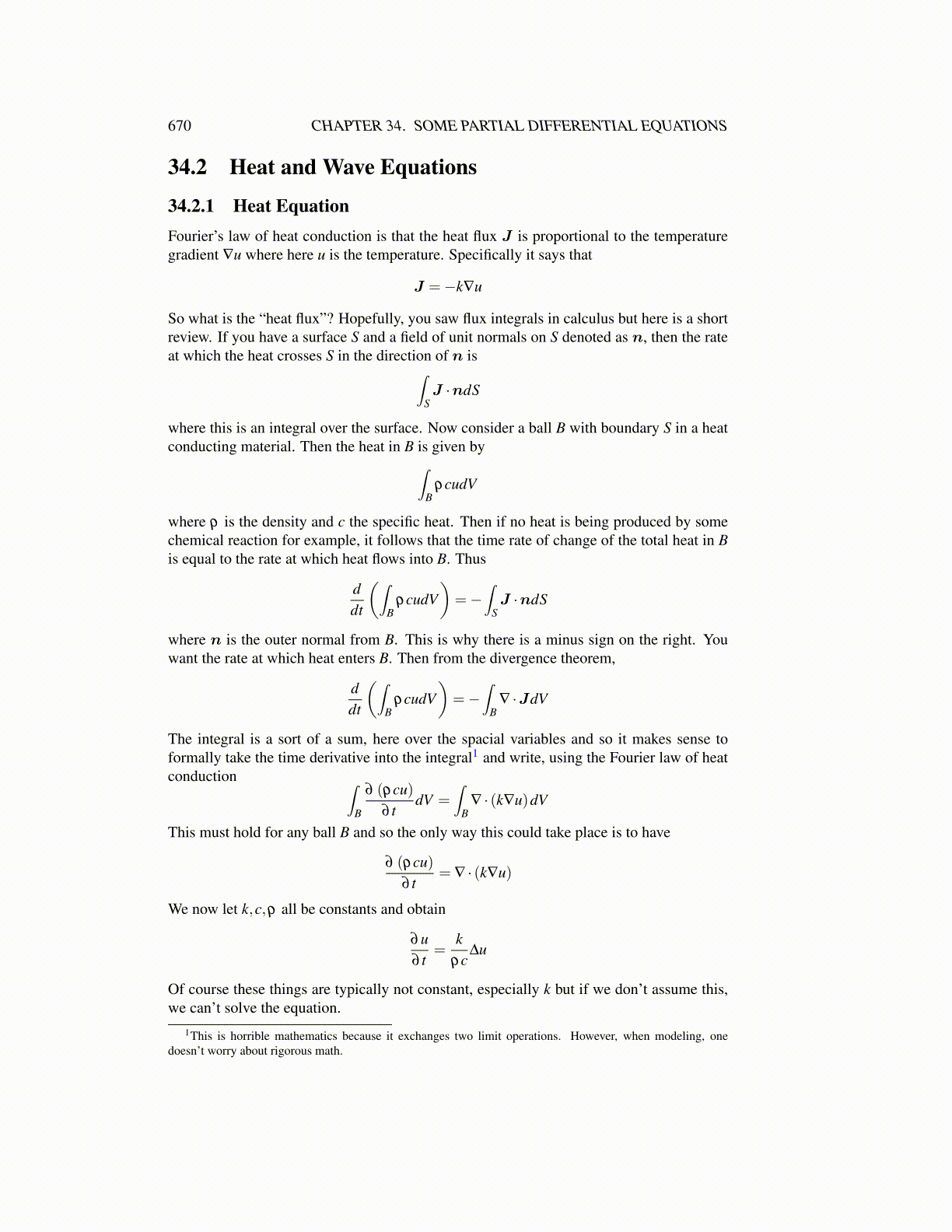
670 CHAPTER 34. SOME PARTIAL DIFFERENTIAL EQUATIONS
34.2 Heat and Wave Equations
34.2.1 Heat EquationFourier’s law of heat conduction is that the heat flux J is proportional to the temperaturegradient ∇u where here u is the temperature. Specifically it says that
J =−k∇u
So what is the “heat flux”? Hopefully, you saw flux integrals in calculus but here is a shortreview. If you have a surface S and a field of unit normals on S denoted as n, then the rateat which the heat crosses S in the direction of n is∫
SJ ·ndS
where this is an integral over the surface. Now consider a ball B with boundary S in a heatconducting material. Then the heat in B is given by∫
BρcudV
where ρ is the density and c the specific heat. Then if no heat is being produced by somechemical reaction for example, it follows that the time rate of change of the total heat in Bis equal to the rate at which heat flows into B. Thus
ddt
(∫B
ρcudV)=−
∫SJ ·ndS
where n is the outer normal from B. This is why there is a minus sign on the right. Youwant the rate at which heat enters B. Then from the divergence theorem,
ddt
(∫B
ρcudV)=−
∫B
∇ ·JdV
The integral is a sort of a sum, here over the spacial variables and so it makes sense toformally take the time derivative into the integral1 and write, using the Fourier law of heatconduction ∫
B
∂ (ρcu)∂ t
dV =∫
B∇ · (k∇u)dV
This must hold for any ball B and so the only way this could take place is to have
∂ (ρcu)∂ t
= ∇ · (k∇u)
We now let k,c,ρ all be constants and obtain
∂u∂ t
=k
ρc∆u
Of course these things are typically not constant, especially k but if we don’t assume this,we can’t solve the equation.
1This is horrible mathematics because it exchanges two limit operations. However, when modeling, onedoesn’t worry about rigorous math.